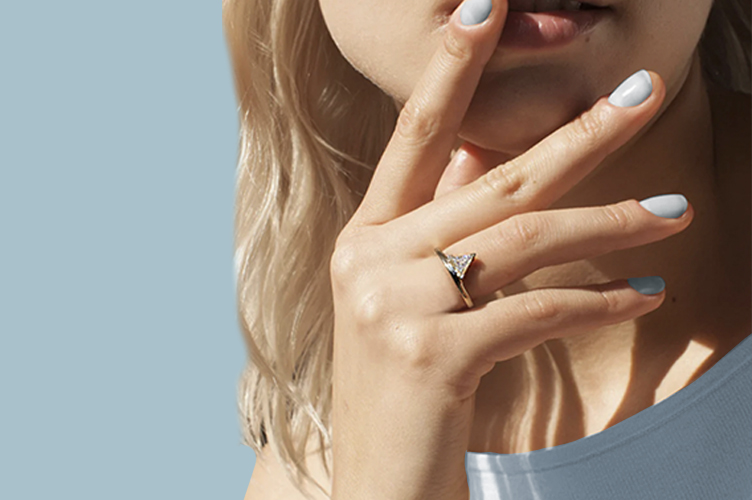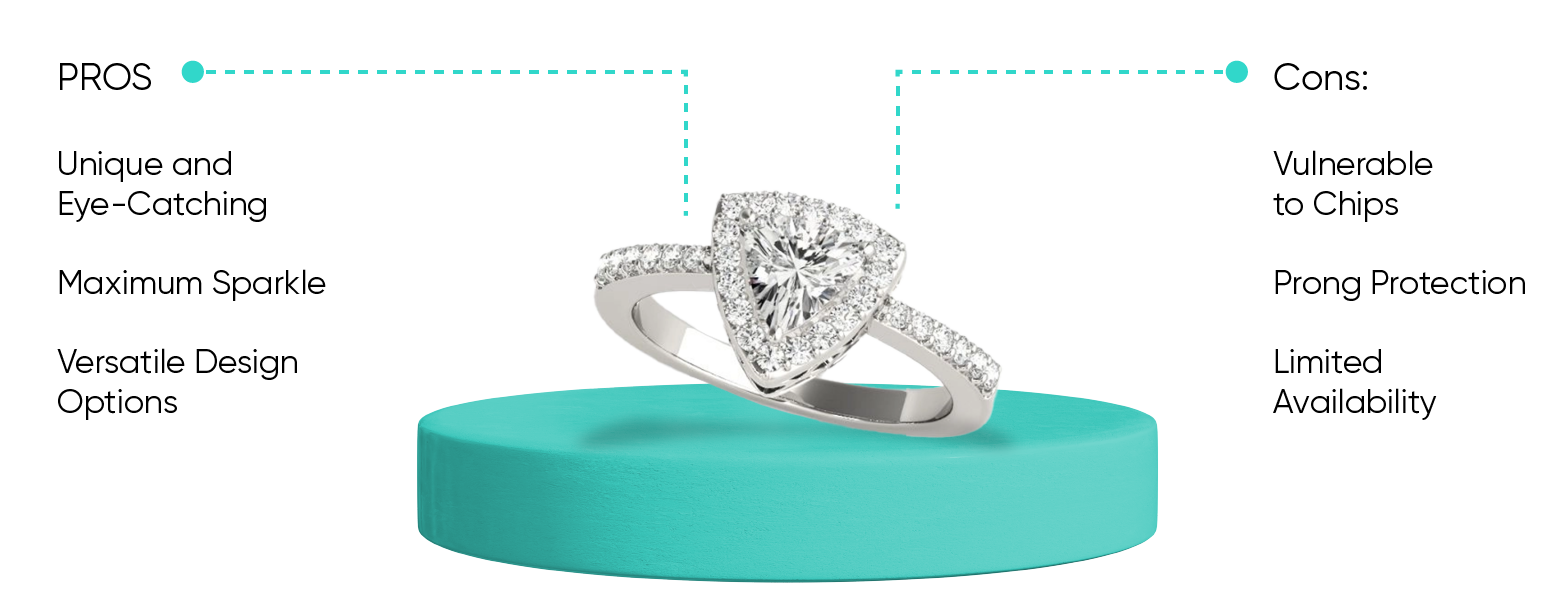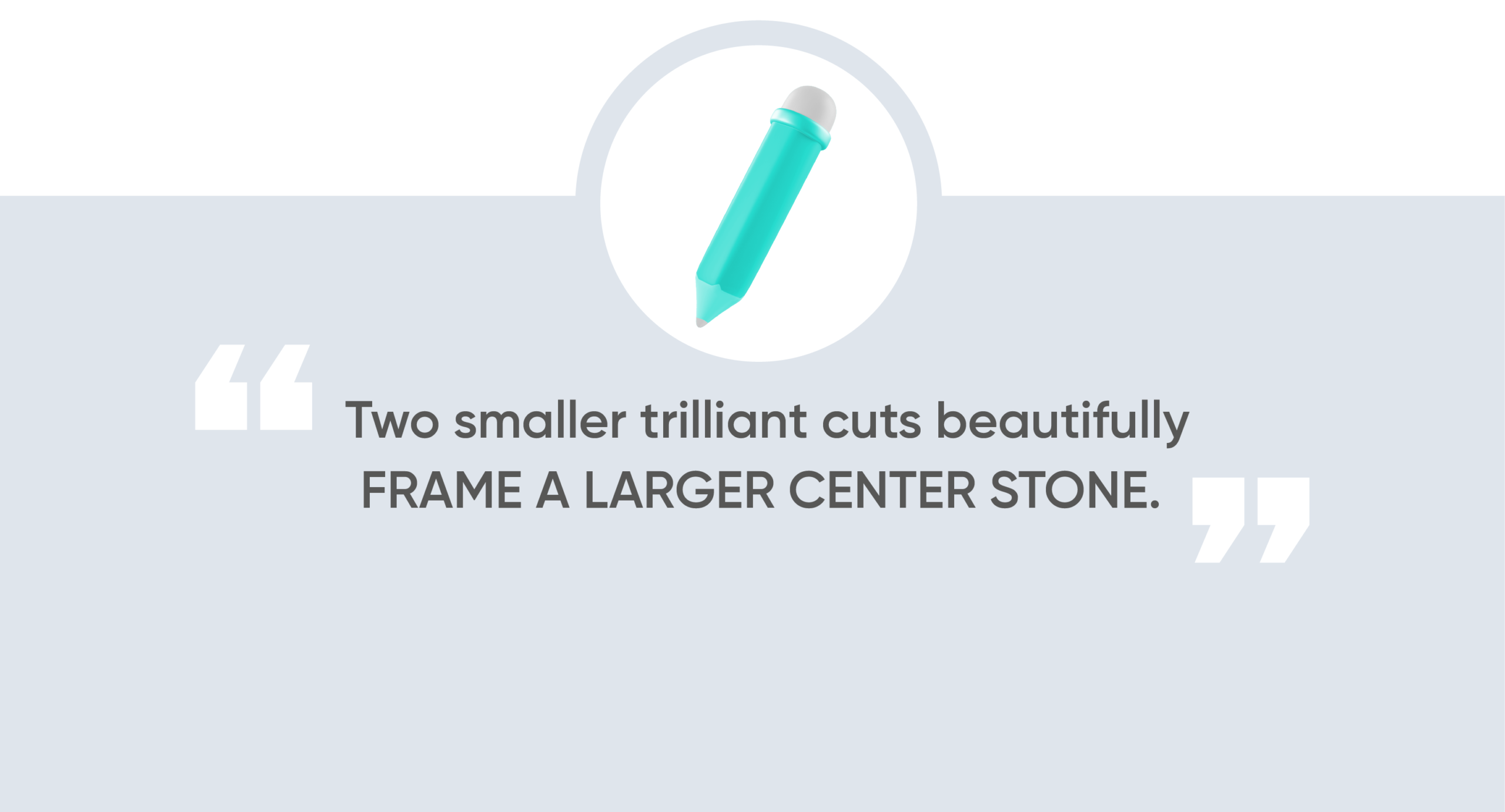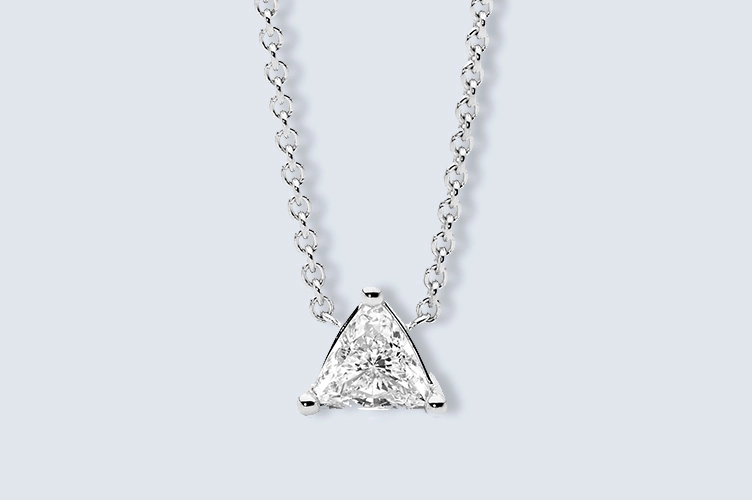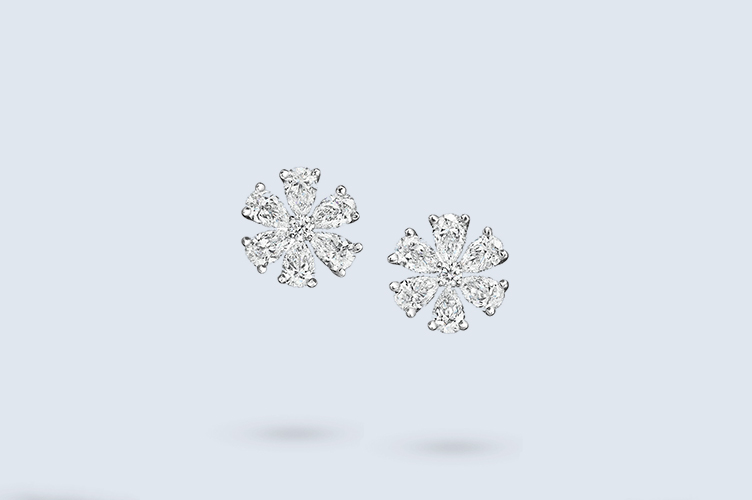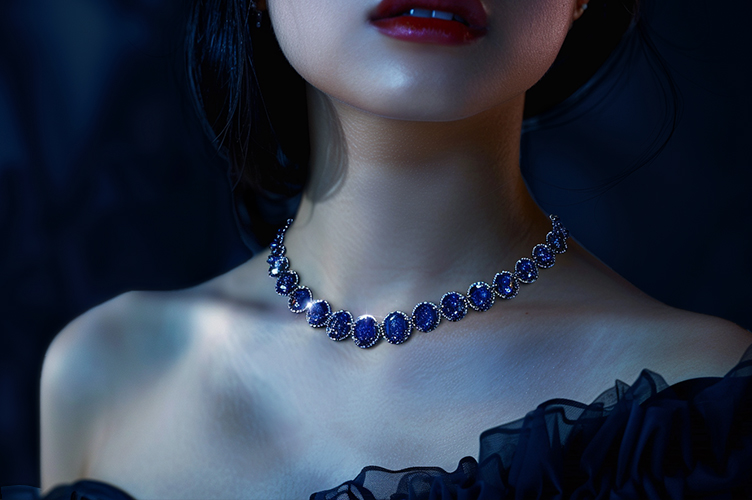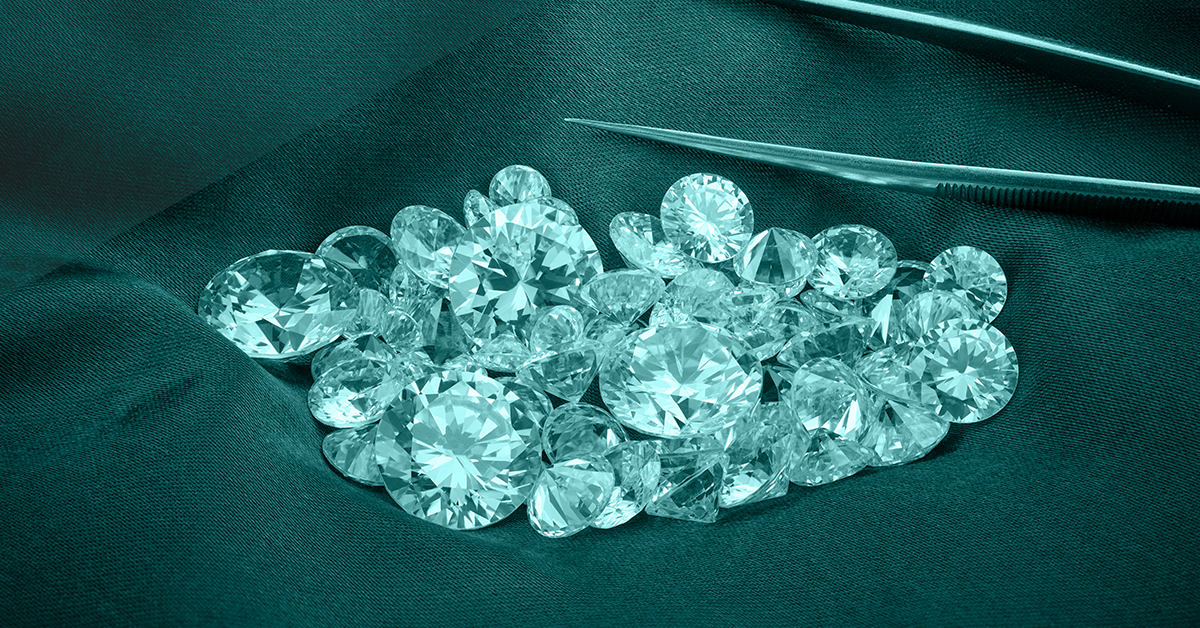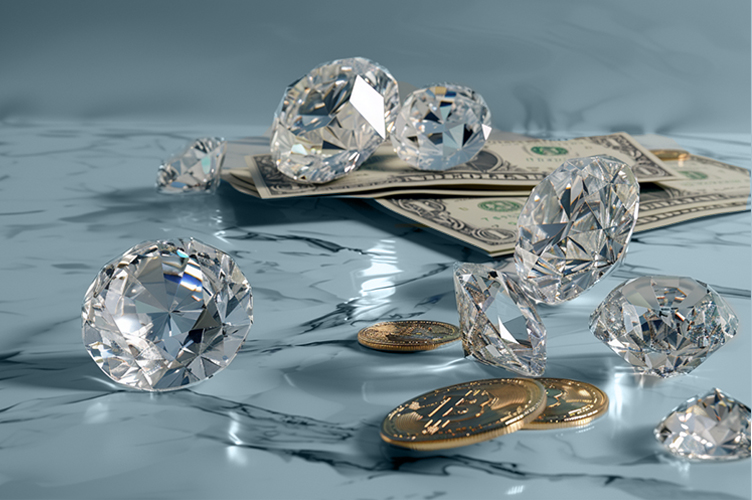Diamonds are the dazzling gems that have captured our hearts for centuries. Among the dozens of diamond shapes, one has been quietly sparkling on the sidelines: the trilliant cut diamond. Sometimes called a “trillion cut,” or even just “trillion,” there’s a good chance you’ve seen these diamonds before. We will delve into the history, style, and everything you need to know about these triangular stones. Get ready to sparkle!
What You Will Learn
The Origin of the Trillion Cut
Trillion cut diamonds entered the scene in the 1960s with their distinctive triangular shape and a brilliant shine. During this era, there was a desire for innovation and a break from tradition. Trillion diamonds quickly gained popularity for their unique and contemporary look. They became a favorite among the fashion-forward and those seeking an alternative to the classic round cut. But they never became a popular stand-alone stone for engagement rings. Instead, trillions have become a go-to accent stone, thanks to their triangular shape that nicely frames another stone.
Crafting a trilliant cut diamond is a delicate and precise art. Diamond cutters shape the diamond to form three equal sides for a distinctive triangular outline. The facets are positioned to reflect and refract light, creating a shiny display of brilliance and fire. A good diamond cutter maximizes the diamond’s beauty from every angle.
Trillion or Trilliant? Why two names?
The trillion cut diamond first hit the seen in America in the 1960s. In the years prior, different diamond cutters around the globe were experimenting with new ways of cutting diamond triangles. The goal for these artists was the same: make a triangle shaped diamond with the sparkle of a round brilliant diamond. One diamond cutter referred to his new invention as a “trillion,” and the other called his diamond a “trilliant.” Both names are a sort of combo of “triangle” and “brilliant,” and both are acceptable today.
What to Look for in Trillion Cut Diamonds
When purchasing a trilliant cut diamond, there are a few factors to consider. Let’s take a closer look:
Cut: Aim for a well-proportioned trilliant cut, ensuring the maximum sparkle. Look for symmetry and consistency in the angles and facets of the loose trilliant cut diamond.
Color: Trilliant cut diamonds show color more readily than other cuts. Opt for a higher color grade to maintain a brilliant appearance.
Clarity: While imperfections can be less noticeable in trilliant cuts, choosing a diamond with a decent clarity grade is still important to avoid any distracting inclusions.
Carat: The carat weight of the diamond depends on personal preference and budget. And remember, you can pay vastly different prices for stones of the same carat weight due to other factors.
Types of Diamond Clarity | BriteCo Jewelry Insurance
Trillion Cut Pros and Cons:
When considering diamond cuts, weighing the pros and cons, especially for engagement ring settings, is essential. Let’s take a closer look:
Pros:
Unique and Eye-Catching: Trillion cut diamonds stand out from the crowd with their distinctive triangular shape, adding a touch of individuality to your ring design.
Maximum Sparkle: Thanks to their carefully positioned facets, trillion cut diamonds sparkle with a brilliance that aims to rival round diamonds, which are the most sparkly.
Versatile Design Options: The triangular shape of the trillion cut lends itself well to various ring styles. The most popular? A three-stone design with the trillions flanking the center diamond.
Cons:
Vulnerable to Chips: Due to the pointed corners, diamond trillions cut may be more susceptible to chipping than other diamond cuts. Ensuring the proper setting and care is crucial to minimize the risk.
Prong Protection: The prongs used to secure trillion cut diamonds require careful attention to ensure adequate protection without interfering with the diamond’s beauty.
Limited Availability: Trillions are less common than traditional cuts like round diamonds. This limited availability may impact the options available and affect pricing.
Suggested Read: Did Your Diamond Chip? | BriteCo Jewelry Insurance
Trends and Popular Styles
Trilliant cut diamonds are contemporary and stylish. Here are some styles you can consider when incorporating a trilliant cut diamond into an engagement ring setting:
Solitaire: A trilliant cut diamond as the centerpiece in a solitaire setting exudes a sleek simplicity, allowing the diamond’s unique shape to shine.
Three-Stone: Two smaller trilliant cuts beautifully frame a larger center stone. This creates an eye-catching design while maintaining a classic appeal.
Halo: Enhance the brilliance of your trilliant cut diamond by surrounding it with a halo of smaller diamonds. This design choice adds sparkle and makes the center stone appear more prominent.
Suggested Reads:
Jewelry Trends You Must Know About | BriteCo Jewelry Insurance
How to Choose the Perfect Engagement Ring Style for Your Partner
Incorporating Your Personal Style
Remember, your diamond should reflect your unique personality and style! Though long hailed as a side stone or accent diamond, the trillion cuts shouldn’t be overlooked. If a triangular shape that doesn’t skimp on shine seems up your alley, consider using one (or more!) in your ring design!
Do you need insurance for trilliant cut diamonds?
Proper insurance is necessary for ALL diamond jewelry. And thanks to BriteCo, protecting your diamond jewelry is affordable and easier than ever.
BriteCo offers affordable specialty jewelry insurance that covers up to 125% of your ring’s appraised value. Our policy covers loss, theft, damage, and mysterious disappearance.
Get an instant free quote for an affordable monthly or annual payment. Then all you have to do is upload the required documentation, and you’ll be covered in minutes.
Also Check:
Exploring Rare Diamond Cuts for Your Engagement Ring
Is a pear cut diamond best for my engagement ring?
Are Rose Cut Diamonds Good for an Engagement Ring?
The Edgy Elegance of the Shield Cut Diamond
Transitional Cut Diamond | BriteCo Jewelry Insurance

